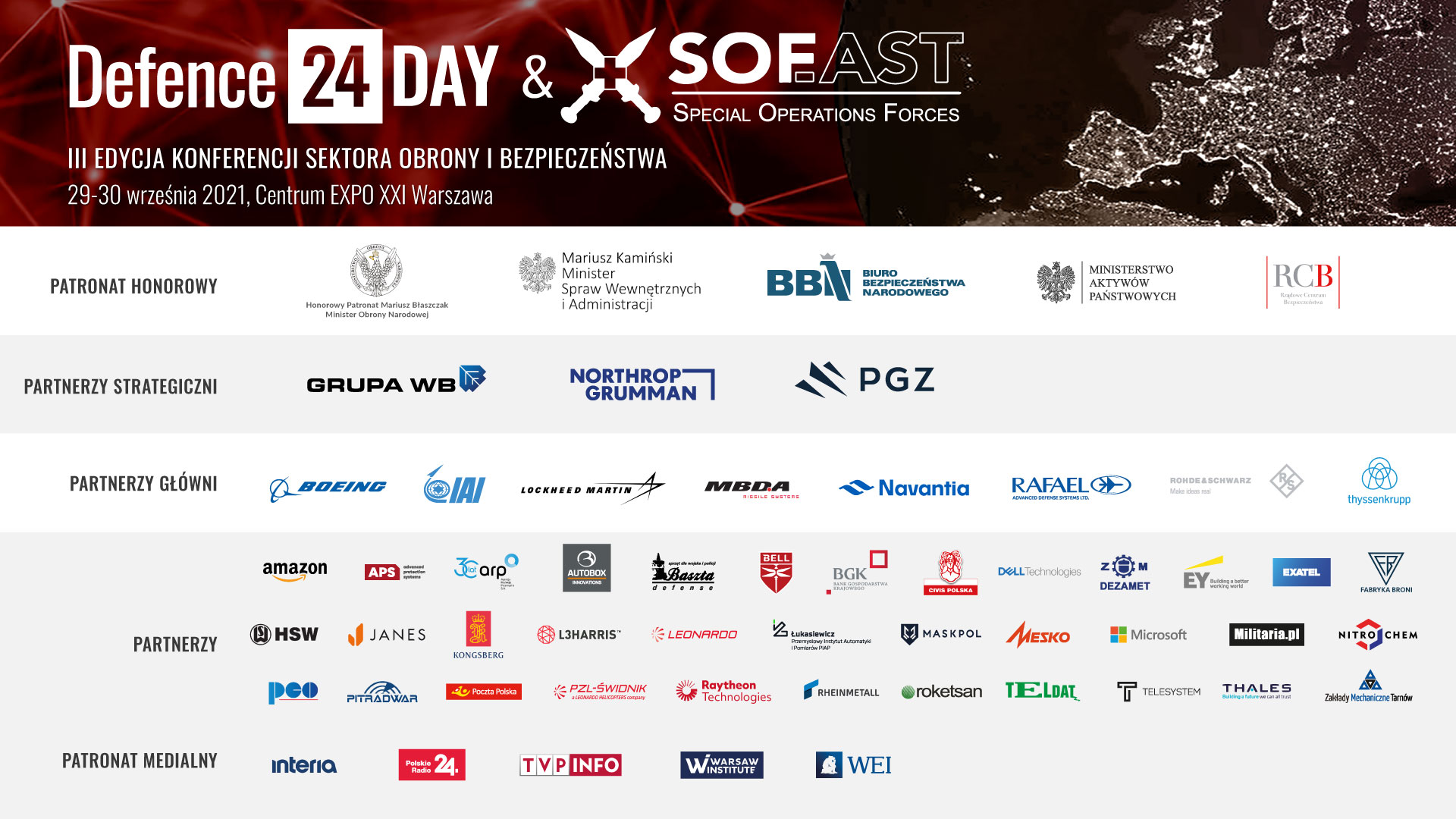Strona główna
Defence24 DAY: Future of the Polish Armored and Mechanized Forces
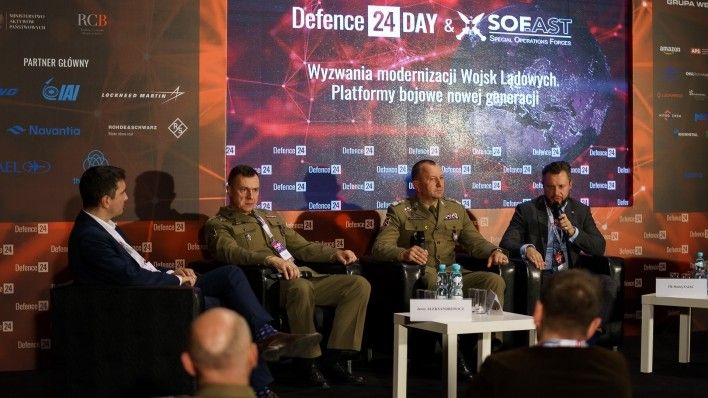
Defence24 DAY Discussion Panel: “Challenges in the land forces modernization process. New Generation Combat Platforms”; was opened by Col. Tomasz Gdak, head of training for the Polish Armed Forces’ Armoured and Mechanized units. Gdak, analyzing the matter from his point of view, presented the current status quo and development prospects for the land platforms that the Army currently operates. Platforms that are considered as potential future acquisitions were discussed as well.
Col. Gdak provided information, that suggests that the armoured and mechanized elements of the land forces currently operate 247 Leopard 2 MBTs (in three variants), 301 T-72 MBTs, 233 PT-91 MBTs, and 1,104 BWP-1 IFVs. Two MBT-related modernization programmes are currently underway. The first one is related to the Leopard 2A4 MBT. The goal is to upgrade the MBTs to the 2PL standard. The objective of the second programme is to modify the legacy T-72 MBTs and upgrade them to T-72AR/T-72M1R variants.
A procurement procedure has been launched, regarding 250 M1A2 Abrams MBTs - these are to reinforce the 18th Mechanized Division. The Borsuk IFV test programme is fairly advanced. The Rosomak APCs are also to be modernized - through the acquisition of a variant using the new ZSSW-30 turret system. Rak and Regina artillery assets are also being introduced. There is a lot of hope when it comes to the acquisition of varied platforms and assets based around the UMPG Borsuk common platform. Tytan combat ensemble programme and replacement of other systems - such as small arms - are also underway.
The Beryl rifles would be replaced by the MSBS Grot system. The PK machine guns would be replaced by the UKM-2000 machine gun. LM60 mortar and Mk 19 automatic grenade launcher are also being introduced. Post-soviet ATGM systems are being replaced by Spike and Javelin ATGMs. We still do not know, however, if, and if so - then what grenade would be used to replace the obsolete legacy RPG-7 systems. The changes in the inventory of the military are accompanied by changes in the organization and structure.
For the first time, a public disclosure took place concerning some data on modernization programmes planned until 2035 - especially in the area tied to the new equipment for the armoured and mechanized component. The assumption is that 250 M1 Abrams MBTs would be procured, 142 Leopard 2A4 MBTs would receive the 2PL/2PL1 upgrade, 105 Leopard 2A5 MBTs would receive the 2A7PL upgrade (that has only been drafted in the presentation). 120 new MBTs would be acquired in the Wilk programme, along with 572 - 588 Borsuk IFVs - solely in the fighting vehicle variant. Data tied to the specialist varieties of Borsuk has not been listed.
The tasks assigned to the armoured/mechanized component (WPiZ) result on the grounds of analysis of various conflicts that have been happening globally over the recent years - there, not only have new tactics been used, as new weapons systems (such as reconnaissance/combat UAVs, loitering munitions, non-kinetic weapons, electronic warfare assets) have been employed as well. The aforesaid experience is used as guidance, for instance in the process of creating the training activities curriculum.
–The main battle tanks are still the basic tool on the battlefield. As the land forces are becoming professionalized, one departs from the use of main battle tanks in mass quantities, and quality and multi- purposiveness of this type of platform is prioritized - in the present, and the future. The main battle tank is, and still will be one of the main assets on the battlefield, and an integral part of the forces (involved) - col. Gdak said, expecting heavy unmanned combat platforms to be fielded in near future.
Adam Hodges, representing Boeing Defense, Space & Security, focused his attention on recommending the AH-64E Apache Guardian helicopter platform, as it can work closely with the M1A2 Abrams MBT systems when it comes to tactical situational awareness information exchange. The helicopter can transmit the target data (concerning the targets detected by its sensors), within a radius of 16 kilometres. G. A. Hodges has previous experiences, he gathered fighting with the use of this weapons system.
Hodges stressed that NATO deployed around 25 AH-64 helicopters and 80 Abrams MBTs to the Eastern Flank. This makes it possible to organize joint exercises involving these components, also learning about their capabilities. Hodges said that Apache remains the leading player on the battlefield, not only providing the birdseye view but also transferring the data back to the land elements.
Krzysztof Lustofin, head of the R&D Center at ZM Tarnów S.A. showcased a broad range of remote control advanced weapons systems, that have been in development since 2009. These include ZSMU A3/A3B and ZSMU A5 weapons stations fitted with optional 7.62 and 12.7 mm machine guns (or a set of both), or a machine gun and GMG-40 automatic grenade launcher, or a machine gun and Pirat ATGM.
12.7 mm Gatling gun is the latest of the ZM Tarnów's products, offering a rate of fire of 3,600 rounds per minute. The weapon features an MHR S-band radar sensor. Its main purpose is to be used in the counter-UAS role at a distance of up to 2 kilometres. Ultimately it is to be placed on an autonomous carrier platform that could resemble the currently tested unmanned platform fitted with one of the remote weapons stations (designed for reconnaissance and combat). The field test programme has shown that the vehicle carrying the ZSMU remote control weapons station (fitted with a 7.62 or 12.7 mm machine gun) may operate autonomously for at least 10 hours, 3-5 kilometres from the control station, feeding back the intel at a distance of up to 1 kilometre. A single battery suffices to cover a distance of 50 kilometres offroad. A movie clip recorded during the test programme, showcased during the conference, has proven the high level of effectiveness in acting against small aircraft and mobile/static threats on the ground.
Rohde & Schwarz's Maciej Stopniak presented the offer of the company when it comes to tactical radios, cryptography, datalinks, integration of communication systems and development of sovereign, national communication suites that would be fused with a transfer of technology (Rohde & Schwarz employs 12,300 employees in 87 countries and is one of the technology/market leaders within the scope of wireless communications, RF testing/measurements, transmission and media, ATC, and military radio communications, cybersecurity, network system technologies, SIGINT/ELINT, counter-UAS solutions; the company also declares its "innovative approach towards cloud processing").
Krystian Piątkowski, Director of Business Development at Rheinmetall Polska focused on the debate tied to the acquisition of the base platform for the new MBT that could meet the demands and expectations of the military over the upcoming 30-40 years. As he noted, none of the existing designs may meet these expectations, but it seems that Rheinmetall may be able to tackle the challenge posed by the prospective requirements.
The company offers a system of solutions with numerous advantages. The weapons system is based around the Rh120L55A1 or Rh130L52 guns. The offer also includes the Strike Shield multi-aspect protection system, a new generation power-pack, and a set of new C4I solutions. Finally, the gun is coupled with new generation DM63 ammunition that is to be succeeded by the DM73 (currently in development) and the DM83 (prospect) rounds. Piątkowski assured that should the Rheinmetall Polska offer be selected, not only could Warsaw access the technology, and the know-how, but it may also become an actor on the European new generation MBT market, with an estimated demand of at least 1,300 vehicles. This, meanwhile, may translate into the heightened commonality of armour in the former Warsaw Pact nation, which would be also preceded by reinforcement of the European defence industry. IPR effect would also be present, with the intellectual property rights being generated in Poland.
– Within the context of the threats posed by the potential adversary - such as the major quantitative advantage, employment of the A2AD measures, and the use of new generation assets, the Polish armoured units need to gain a qualitative advantage. None of the existing designs would provide such an advantage, Piątkowski concluded.
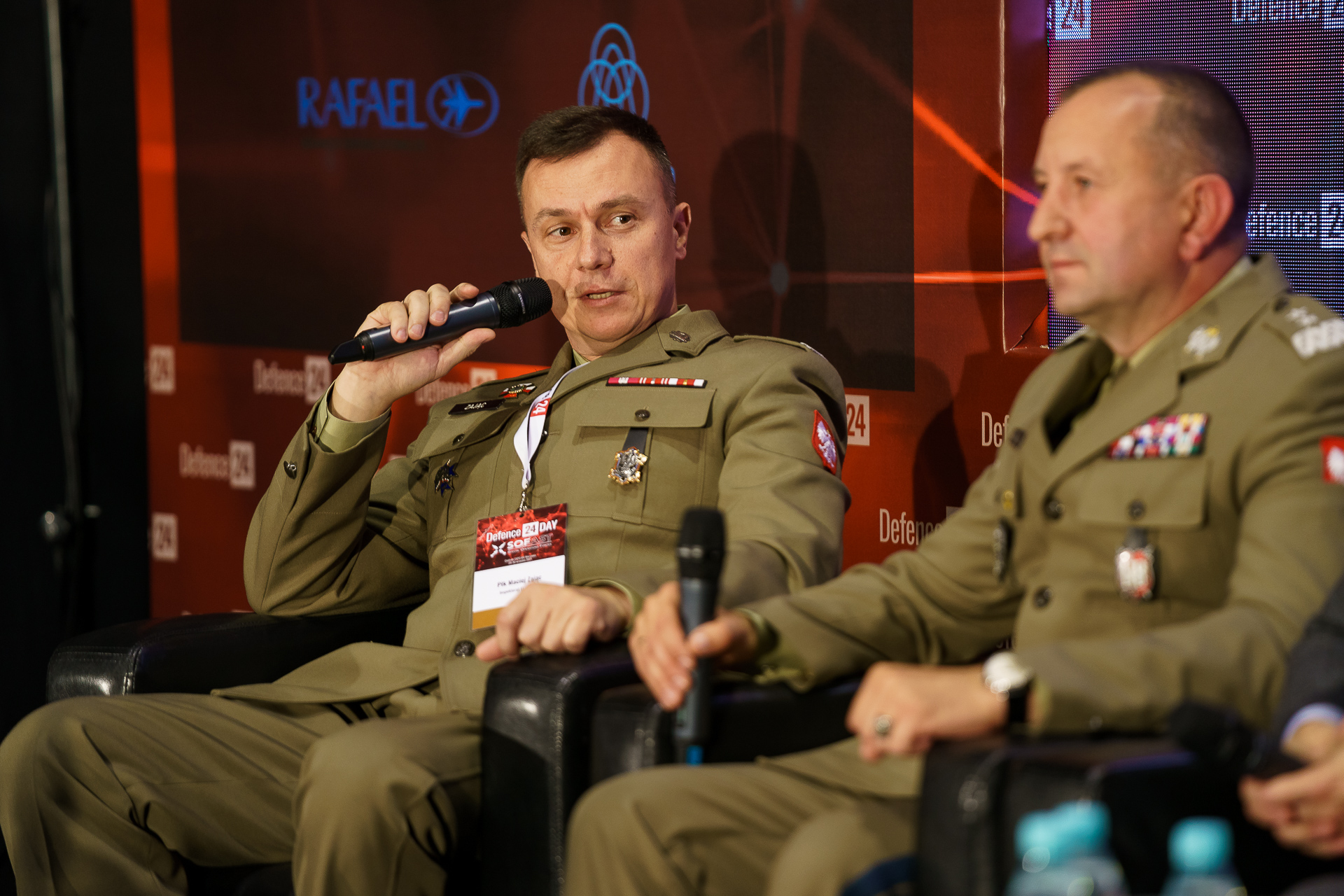
Col. Maciej Zając, Head of the Leadership of the Land Tech at the Armament Inspectorate assessed the current progress in the Wilk programme: We have engaged in a dialogue with all of the potential bidders. We have also analyzed the already existing designs and the designs under development. We have gathered the technical information and offers related to potential cooperation with the Polish industry. The decision to procure the Abrams MBTs has great significance for us. These MBTs are not our target solution of course, but they influence the form of the feasibility study and the decisions that need to be made to implement the prospective solution in Poland.
Zając said that not only should the Wilk platform be an MBT, an autonomous fighting asset, but it would act as a “system of systems”, similarly to the platform designed in the French-German NGCS programme - it would be a “combat environment based around a tank-like vehicle”. Col Zając said that the procurement process concerning a new ARV is fairly advanced now. Not only would the new ARV need to be able to support the existing heavy armour, as it shall also be capable of working with the future heavy platforms that are to be acquired by the Polish forces. The work on assault bridges is reportedly at a similar stage.
Div. Gen. Jarosław Gromadziński, commander of the new, 18th Mechanized Division, defined the concept for the unit that is being newly formed, along with the principles that would be adopted in the process of establishing its potential, when it comes to its inventory. The 18th Division, similarly to the 16th Division located on the other side of the Vistula river, shall receive the latest generation of armament. The armament in question shall also be common, to a great extent. This has a great significance for logistics - the support units would be tasked with as quick as possible recovery of the vehicles damaged in combat.
–For now, I have two main battle tank platforms and five main battle tank types in my Division. I am a proponent of the unification of vehicles, at least at a level of a tactical element, best if implemented in the whole of the Armed Forces. UMPG Rydwan can be listed as an example here - 11 years ago a team led by my was developing the concept for this platform. Today - we have the Borsuk IFV. Out of 12 proposed vehicles, only Borsuk progressed to the stage of advanced works. I hope that it would be introduced, as it meets all of our requirements. This would facilitate logistics, planning, and would allow the elements to cross water obstacles instantly - providing me with freedom of manoeuvre. Meanwhile, unification of all platforms, for me, is a determinant of a contemporary army. This shall, as the General said, pertain to both wheeled, as well as the tracked platforms.
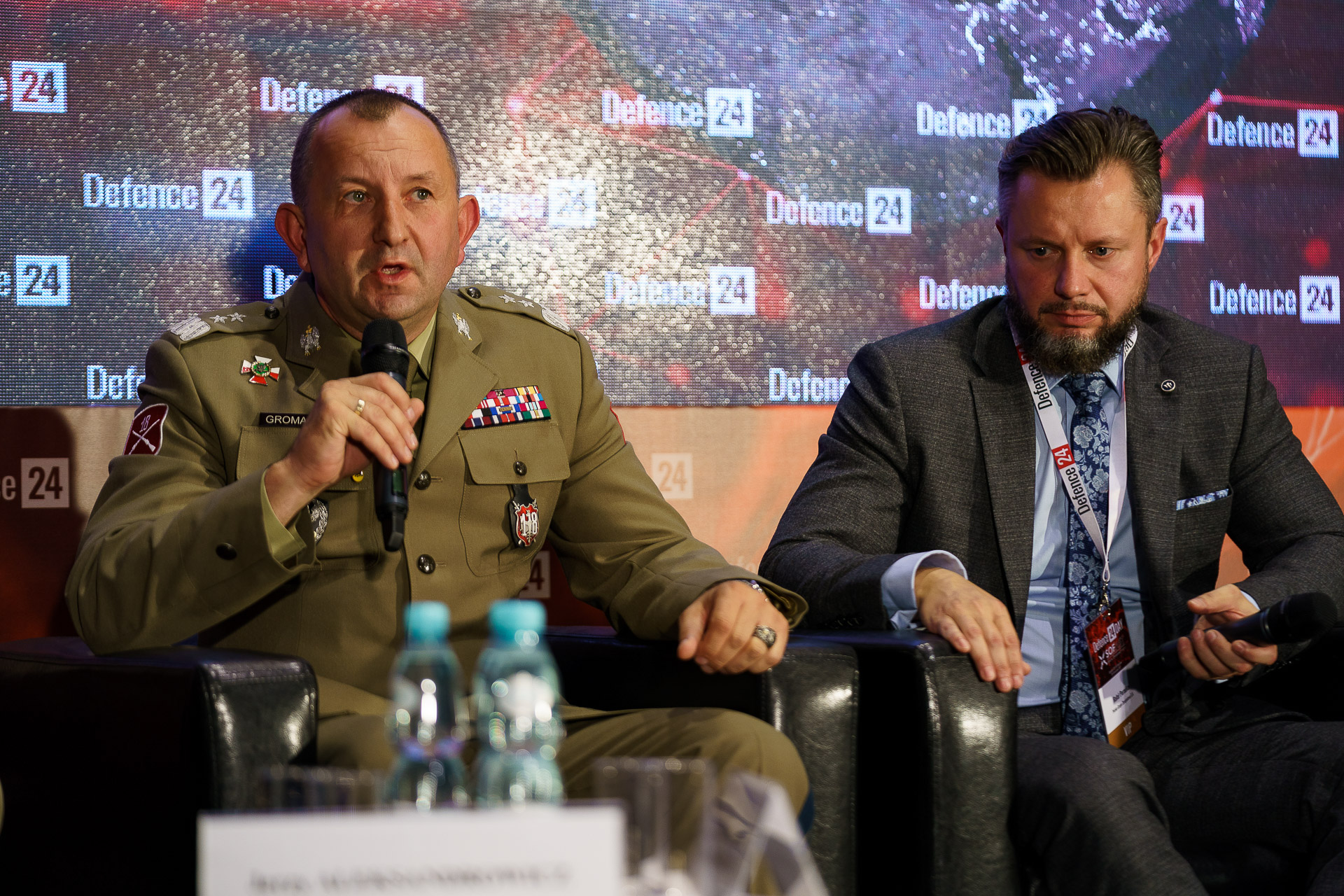
The manoeuvrability should be at the foundation of the lethality of the division. The general summarized this in a claim You stand still - you die!. He referred to the principle of the "Multi-Domain Operations" here. Dealing with a fixed, defined operational theatre, that cannot be changed (from the eastern border to the Vistula river), the advantages shall be found in other domains. Thus, the elements need to be agile, and rapidly reach their positions or be able to quickly leave the areas where artillery shelling poses a threat. It is also necessary to possess a capacity to cross water instantly, without preparation.
The General does not expect that major tank battles would be happening during the future conflict. Even the Ukrainian conflict, or the recent tensions in the Caucasus, have shown that time has come when small, rapid raids of small elements would perform their task and fall back instantly. This is where mixed elements (tank battalion with an infantry company, or infantry battalion with one-two infantry companies) would be useful. I need one single battalion on time more, than a division, that would be late, Gromadziński adds. And this is where the artillery, including Homar-class medium-range rocket artillery assets, UAVs, UCAVs, and loitering munitions come into play, providing the side of the conflict with sufficient autonomy. This is where one wins extra time. The potential conflict would be fast, short-lived and intense, and the winner would need to be decisive, possess manoeuvrable forces, and one would also need to be able to gain a tactical advantage that would then grow into an operational and strategic advantage.
Director Rafał Poradka, speaking on behalf of the PGZ Group, claimed that the Group is mature enough to develop its products based on the user experience gathered by the military, for instance throughout foreign deployments. These have helped define the upgrades timeline for the Rosomak APC for instance. – My own experience shows that this does not need to entail major upgrade projects, he said. – It is worth proposing modification packages, without waiting for a major upgrade. One needs to implement even minor changes in the existing inventory - as it happens in the case of the T-72.
Referring to the finalization of works on the test programme related to the ZSSW-30 turret (accomplished some time ago), Poradka said: We are approaching the conclusion of this matter, we are awaiting the invitation to launch the "manufacturing" talks.
The PGZ Group, and the Polish Ministry of Defence, as Poradka assures, are trying to find accelerating actions for the Borsuk programme, to accelerate the implementation, without any breach in the tests and qualification process. This is to shorten the delivery period to the bare minimum, for the first production lot. Arrangements within that scope do exist, regarding the delivery of a bigger lot of Borsuk vehicles. This was confirmed by Col. Zając.
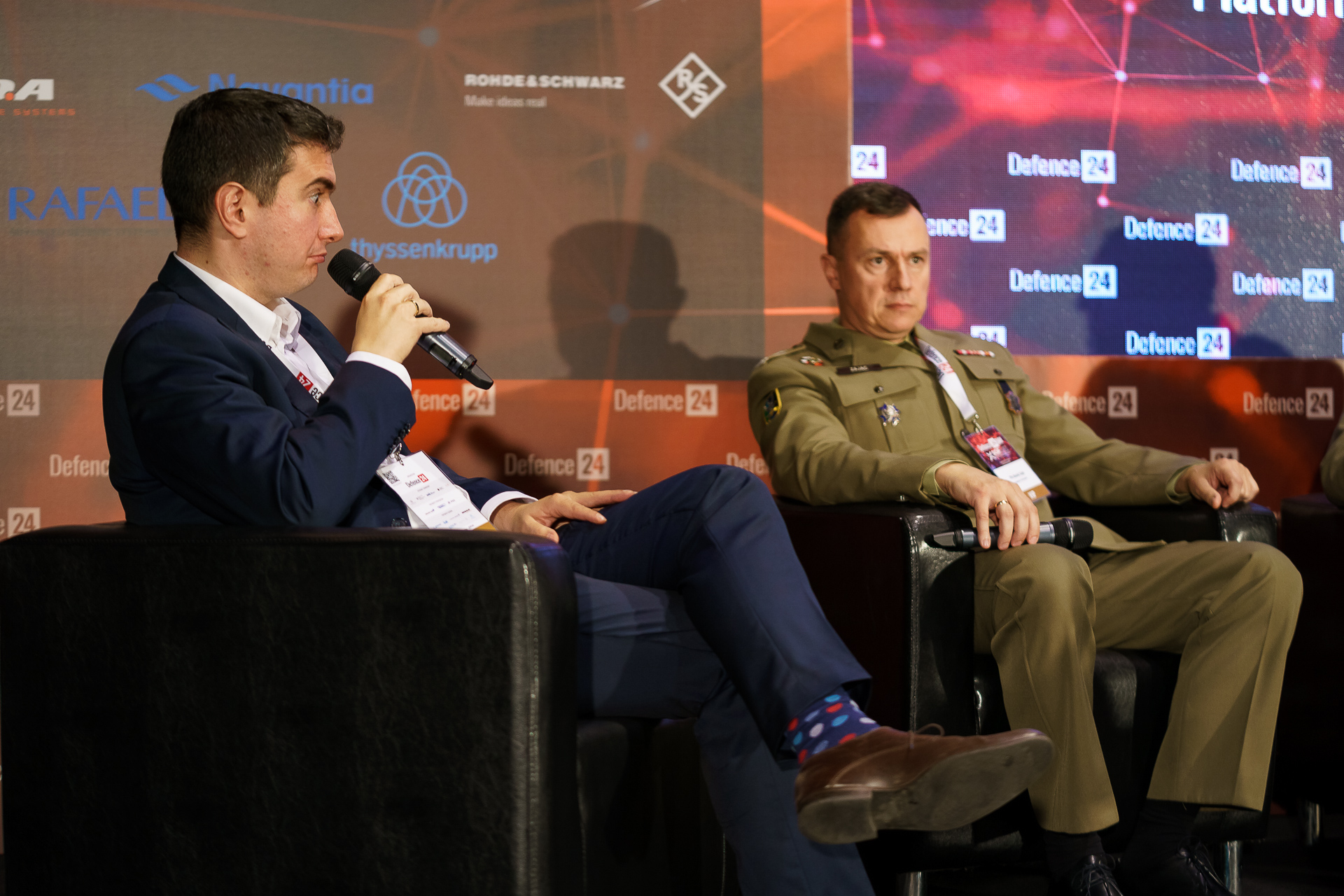
The rumours suggest that 4 vehicles would be used for testing, within the scope of the so-called supervised operation (advanced cognitive tests) in 2023. The operational use of those vehicles would be the final confirmation of the design and tactical solutions (with potential adjustment areas to be investigated), before LRIP. Then series manufacturing would be launched, at an expected rate of 50 vehicles being introduced per annum. The Polish Ministry of Defence would need to make the final decision on the procurement of Borsuk, assessing the budgetary headroom, the human resources situation, and the ability to establish modern training and support infrastructure, required to fully introduce the new platform.
Some other major claims and declarations were made, tied to the expected launch of a Mustang 2 programme (the name is not official). This procurement is to result in the acquisition of a 6x6 wheeled platform that would be well-suited to carry out reconnaissance, protect command outposts, and so on. Col. Zając assured that the protocol for the ZSSW-30 turret qualification test programme is soon to be approved by the Head of the Armament Inspectorate. This would make it possible to begin negotiation with HSW S.A., regarding the executory agreements.
Read more: Polish MoD Reveals Budget Draft for 2022
Following the fiasco of the Pegaz programme caused by the communication systems requirements change, the Armament Inspectorate is reportedly ready to launch a procurement of a new vehicle almost instantly. Armoured Mustang procurement is also in the queue. All of the developments above, along with the expected LOTR procurement conclusion (Light Armoured Reconnaissance Carrier) in December, yet again places the matter of the unification of the vehicles inventory high at the ladder of priorities.
The justification of the BWP-1 modernization was also discussed. The PGZ representative assured that the programme may be pursued by the Group alone. We need to define the direction from where the threat will come. If that's east, then the best-equipped units, with the latest equipment, shall be based east of the Vistula river - this is obvious to me, said General Gromadziński. On the other side of the Vistula river, the units that are bound to develop are to be based. The economics of the matter show that nobody can afford to equip all of the Armed Forces with the latest equipment and grow the military so large during peacetime.
As fielding of the Borsuk IFV in 16th and 18th Mechanized Divisions would take time, it would be reasonable to upgrade a certain quantity of BWP-1 vehicles - with that number being sufficient to rapidly boost the combat value of the units deployed on the eastern flank. One needs to remember that "an army of reservists" exists, who have served on the BWP-1 or T-72 platforms. They may be used to create reserve forces. Unofficial estimates suggest that 130-350 BWP-1 vehicles could be upgraded, to reach the standard presented by WZM Poznan during MSPO 2021. Some of the remaining vehicles in the best condition could be used for other purposes - for instance, in a tank-destroyer role.
